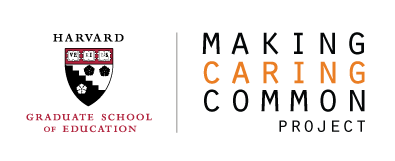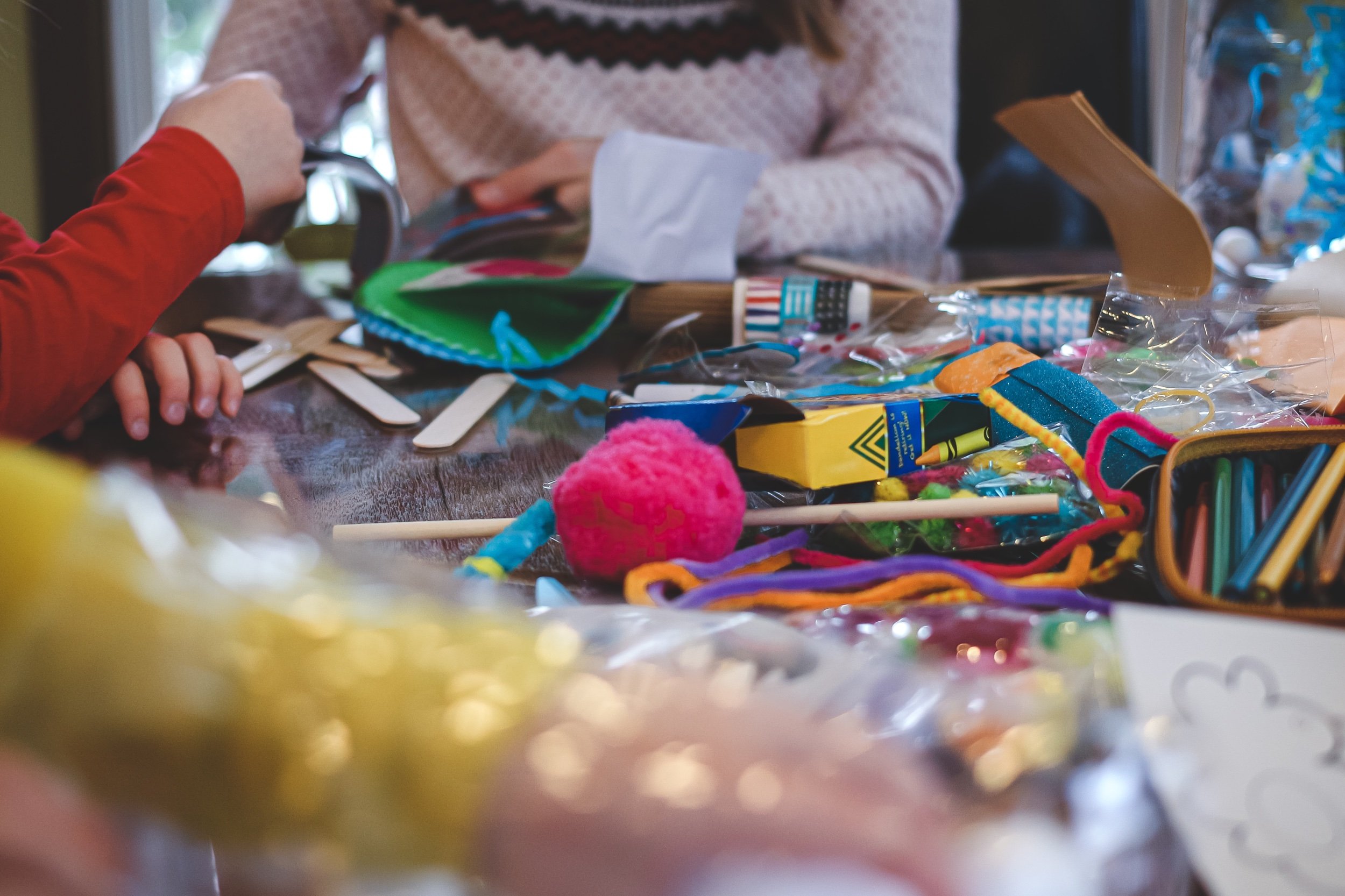Build-It Challenge can be used regularly with students to promote teamwork and communication.
Read MoreSort by topic
- Bias
- Bullying
- COVID
- CSN
- Caring and Empathy
- College Admissions
- Educator Resources
- Elementary School
- For Educators
- Gender
- Mental Health
- Moral and Ethical Development
- Relationship Mapping
- Romantic Relationships
- School Culture and Climate
- Sexual Harassment and Misogyny
- Social - Emotional Learning (SEL)
- Social-Emotional Learning (SEL)
- Talking Across the Aisle
- gender bias
Newsball is a game that can be used regularly with students to build a foundation for the practice and habit of empathy and active listening, while building classroom community.
Read MoreJust released! A new online version of our popular Circle of Concern strategy. Use it to help children — and adults — develop greater empathy.
Helping students develop greater empathy is essential for building a positive school climate, but equally important is considering who students have empathy for.
Read MoreUse Making Caring Common’s relationship mapping strategy for your school, community organization, or religious group to help ensure everyone has a strong connection to someone else during these challenging times.
Read MoreCaring and compassion are vital, teachable skills with the power to promote tolerance and inclusiveness in our schools, communities, and neighborhoods. This fun, three-part series has been designed to inspire and empower children to be ambassadors for good beyond their immediate friends and family.
Read MoreTo help educators learn how to build empathy in their school communities, Making Caring Common reviewed existing research on empathy and the strategies of evidence-based programs that promote it. Our work shows that there’s more to developing empathy than simply asking students to “walk in someone else’s shoes.” In this resource, you’ll find steps you can take to build real empathy in your students and your community.
Read MoreHow can we inspire and teach young people to care about and take responsibility for others, to think clearly about and pursue justice, to stand up for important principles?
Research suggests that developing these key moral capacities is not achieved via one-shot class assignments or brief programs but through sustained commitment and reflection within the context of peer and adult relationships. Yet children rarely engage in either substantial ethical activities or reflection, guided by adults who stand for important moral values, or even dialogue about how to live those values day to day.
Shared experiences and rituals can tie together school and community as places that value care and commitment and play a vital part in fostering a moral identity in students. Over the course of a semester or an academic year, the Caring Community Youth Capstone supports young people’s ethical development and builds a positive school culture where young people are responsible for creating a caring community.
Read MoreThe School Climate Committee is a key mechanism for creating positive social norms, for reducing bullying, and for developing more respectful, caring children. It also gives students agency in creating positive social norms.
A growing body of research supports the key role of school culture and social norms in preventing a wide array of social and emotional problems and promoting the development of caring, responsible, and respectful children. As children enter adolescence, they are especially influenced by social norms — by what other teen’s consider important, by how other teens define who is and is not worthy of concern, and by how other teens gain power and respect.
Because students primarily take signals from other students about social norms and what is ethically acceptable, and because students have inside knowledge about social dynamics, it is mainly students—especially acting together—who can change norms. This School Climate Committee strategy is one way to channel student power and influence in their school community.
Read MoreAs children get older, they face ever more complex situations that can be difficult to navigate.
Particularly salient are moral or ethical dilemmas, which concern issues of fairness, justice, and caring. These are decision-making problems without definitive right or wrong choices that affect other people as well as the self, and thus, they are fruitful exercises in moral reasoning.
With this light-lift strategy, students will practice evaluating and constructing moral or ethical dilemmas to get them thinking critically about others’ perspectives and feelings in challenging situations. Students will reflect on their own judgments of others and the importance of context, and what they themselves could do in challenging times.
Currently, our What Would You Do? strategy is available to schools in our Caring Schools Network. Reach out to Glenn Manning, Senior Program Coordinator at Making Caring Common to learn more about Caring Schools Network.
Read MoreStorytelling is a powerful tool for eliciting emotion and curiosity. It can be especially valuable in prompting students to reflect on their own identities and values, and to recognize that despite people’s differing stories, we all share commonalities. Stories are a great reminder that we are all human and that we are all capable of bridging difference through understanding and connecting emotionally with others.
With this light-lift strategy, students will identify and investigate their personal set of values and what/who matters to them. Students will use these values to guide the telling of (and making sense of) their own story. Using Chimamanda Adichie’s TED Talk “The Danger of a Single Story” as a guide, students will then learn about real people’s stories, particularly those often marginalized or misunderstood. Finally, students will make connections between their own and others’ stories to appreciate the similarities and differences in their values.
Currently, our Story of Us strategy is available to schools in our Caring Schools Network. Reach out to Glenn Manning, Senior Program Coordinator at Making Caring Common to learn more about Caring Schools Network.
Read MoreStudents’ capacity for empathy can be developed by learning to appreciate other people’s stories.
By engaging with others in a structured way and trying to shape a narrative that encapsulates a piece of that person, students will understand the nuances of lived experiences, values, and perspectives. By interviewing others, especially those who may be different from them, they will practice vulnerability and develop trust, which in turn will strengthen their school community.
With this light-lift strategy, students will dive into narratives of self and others to offer more nuanced perspectives and feelings around people’s stories. The narratives will mirror the “Humans of New York” series, and students will study a few of them to get a sense of the expectations (e.g., interviewing other students or faculty members). Humans of Your School provides students with opportunities to connect with those different from them, to listen to different stories and try to understand their different perspectives, and to appreciate differences while also finding commonalities.
Currently, our Humans of Your School strategy is available to schools in our Caring Schools Network. Reach out to Glenn Manning, Senior Program Coordinator at Making Caring Common to learn more about Caring Schools Network.
Read MoreResearch shows that being kind and caring makes people feel good — by recognizing the appreciation of others as well as beginning to view oneself as altruistic or compassionate.
Studies have also shown that feeling care and concern for others is linked to altruism, and an effective strategy to spark caring is to encourage people to imagine what others are going through and how they feel. Kindness and caring are also contagious. Literally. They can spread and influence people to do good deeds beyond their existing networks.
With this light-lift strategy, students reflect and discuss how to encourage more kindness and caring, for themselves and others, at their school and beyond. They will practice regular intentional acts so they become routine and normalized parts of students’ lives. By reporting back, students will learn about each other’s experiences and likely use them as sources of inspiration. The activity encourages a variety of kind and caring acts, including self-improvement.
Currently, our Everyday Caring strategy is available to schools in our Caring Schools Network. Reach out to Glenn Manning, Senior Program Coordinator at Making Caring Common to learn more about Caring Schools Network.
Read MoreGetting students to physically stand along a continuum that represents their beliefs or values can be a vulnerable yet empowering experience, and often helps students find commonalities rather than differences.
With this light-lift strategy, students arrange themselves in different configurations based on their level of agreement or disagreement with an ambiguous or open-ended issue or statement. Student discussions and teacher-led questioning promote thoughtful inquiry and engage the class through disagreement in a structured and safe environment.
Currently, our Take a Stand strategy is available to schools in our Caring Schools Network and to schools participating in the Middle School Kindness Challenge. Reach out to Glenn Manning, Senior Program Coordinator at Making Caring Common to learn more about Caring Schools Network.
Read MoreStereotypes are all around us, and we are all prone to stereotyping others without even knowing it. The Confronting Stereotypes strategy and related routines gets students in the habit of noticing and understanding the components of stereotypes, including distinctions from bias and prejudice. In the process, students develop their understanding and concern for certain groups or identities that they might be apt to make assumptions about.
With this light-lift strategy, students reflect on their implicit associations, and learn about the connections with and between stereotypes, biases, and prejudice. Students engage in a stereotype scavenger hunt and generate a list of stereotypes they recognize in their everyday lives and discuss how the stereotypes can be re-framed. They watch and discuss short clips about one girl’s story of inspiration or view different media to discuss its role in perpetuating stereotypes.
Currently, our Confronting Stereotypes strategy is available to schools in our Caring Schools Network and to schools participating in the Middle School Kindness Challenge. The related routines are available below. Reach out to Glenn Manning, Senior Program Coordinator at Making Caring Common to learn more about Caring Schools Network.
Read MoreCommunication and listening skills form the foundation of empathy-building in the classroom and beyond. However, teaching good listening ignores the often poor listening we do daily. By naming and understanding what good listening does not look like, students can better acknowledge their own areas for improvement. The simple yet creative nature of this lesson allows students to reflect on their vulnerabilities, while having fun and building relationships with classmates they might not know very well.
With our light-lift Communication HUB strategy, students will learn about what gets in the way of truly effective listening and practice poor and good listening skills in free-form “School HUB” sessions. Students will create specific goals for their own listening and report back over time.
Currently, our Communications HUB strategy is available to schools in our Caring Schools Network and to schools participating in the Middle School Kindness Challenge. Reach out to Glenn Manning, Senior Program Coordinator at Making Caring Common to learn more about Caring Schools Network.
Read MoreDiscrimination and harassment amongst students is surprisingly common in many schools, and sometimes happens beneath school staff’s radar, leaving large numbers of students feeling sad, angry, isolated, or ostracized. These actions affect the entire school climate — other students who witness these acts may feel unsafe, fearful, or pressured by their peers to participate. Subtle comments and messages can move quickly between students, leaving adults and students feeling helpless, not knowing how to effectively prevent such cruel behavior.
One of the most common types of harassment reported by students is being teased or excluded based on physical appearance. An individual might be targeted for not looking a certain way or for having a particular prominent feature. As adults, we can counteract this kind of cruel behavior by giving students opportunities to better understand the impact of hurtful comments, develop empathy, and practice compassion in their day-to-day lives.
Read MoreA growing body of research supports the potential benefits of mindfulness, including stress reduction, emotion regulation, better relationship satisfaction, and improved memory and attention.
Applications of mindfulness, the practice of focusing our attention in a particular way, can be relatively easy to implement and are not time intensive. Given the benefits and feasibility, mindfulness has become increasingly popular across a variety of fields, including medicine, psychology, business, and more recently, in education.
Evaluations of school-based mindfulness practices have shown positive findings, including increased attention, self-control, class participation, and respect for others. Mindfulness practices can also serve as a powerful classroom management tools, reducing stress for teachers and students. Many mindfulness activities can be easily interwoven into routine classroom activities and lessons. They can also be extremely useful during transitions, for example, settling down after beginning a new class. Given the potential benefits and the ease of implementing mindfulness practices, these strategies are well-suited for schools.
While there are many methods of practicing mindfulness, we have provided the following short practices to serve as an introduction. We have also included a list of resources where you may find additional information about mindfulness as well as other mindfulness exercises.
Read MoreToo often the elderly are invisible to others, and perhaps especially to teenagers. As adults, we can teach students to show respect and to demonstrate compassion towards the elderly by giving students opportunities to better understand the impact of discrimination or apathy toward the elderly. We can also help students develop empathy and practice compassion and respect for the elderly in their day-to-day lives.
The following case study includes a short story from multiple viewpoints and a set of questions designed to facilitate discussion about respecting and caring for the elderly and the importance of maintaining commitments and volunteering for selfless reasons.
Read More







